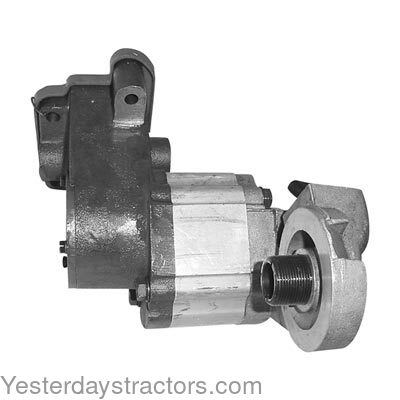Tall T
Well-known Member
O.K. what am I missing?
1st startup in 2 months. first thing happened was a dripping sediment bowl which I think I have stopped. Next the rpms shot up so I frantically worked the throttle control but nothing so I quickly turned it off. Tried once more, same deal so I turned it off quickly again. The throttle link to the governor was off. I guess while installing a fan belt I had dislodged it.
Makes me sick to think of letting the rpms get that high -- even for 5 seconds!
BUT . . . No action out of the hydraulic quadrant at all.
I changed the filter that's on the hydraulics a while back but had never tried to use the hydraulics till today -- just got the new wheels on 2 hours ago.
I have my guesses like the pump being out of prime (having to be bled of air) because of the disturbance & loss in the return line by my changing that filter. I wondered about the filter itself, but I crossed the Kralinator correctly that was on it.
Sure hope it is something simple after all the blood, sweat, tears and time the tractor has eaten up so far.
Thanks,
Terry
P.S
Those unsightly marks on the tires are the construction adhesive I've been experimenting with and I just put it on today. I could sand it off tomorrow I suppose.

1st startup in 2 months. first thing happened was a dripping sediment bowl which I think I have stopped. Next the rpms shot up so I frantically worked the throttle control but nothing so I quickly turned it off. Tried once more, same deal so I turned it off quickly again. The throttle link to the governor was off. I guess while installing a fan belt I had dislodged it.
Makes me sick to think of letting the rpms get that high -- even for 5 seconds!
BUT . . . No action out of the hydraulic quadrant at all.
I changed the filter that's on the hydraulics a while back but had never tried to use the hydraulics till today -- just got the new wheels on 2 hours ago.
I have my guesses like the pump being out of prime (having to be bled of air) because of the disturbance & loss in the return line by my changing that filter. I wondered about the filter itself, but I crossed the Kralinator correctly that was on it.
Sure hope it is something simple after all the blood, sweat, tears and time the tractor has eaten up so far.
Thanks,
Terry
P.S
Those unsightly marks on the tires are the construction adhesive I've been experimenting with and I just put it on today. I could sand it off tomorrow I suppose.










